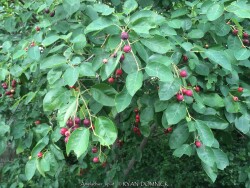
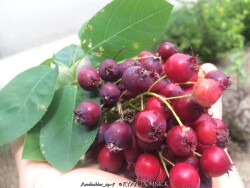
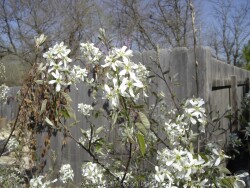
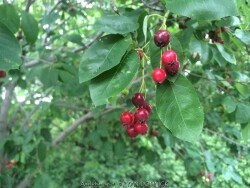
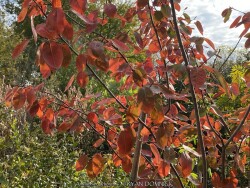

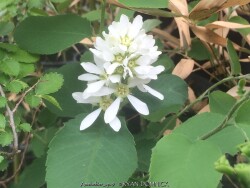
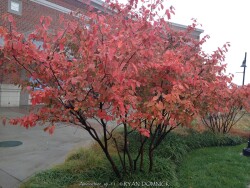
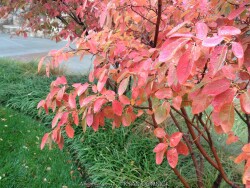
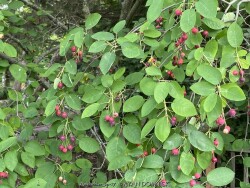
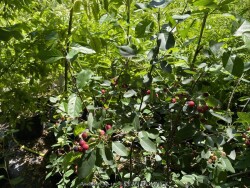
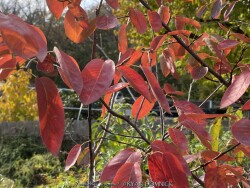

Plant Min Zone: 4a
Plant Max Zone: 8a
Sunlight: Full Sun, Part Sun, Shade
Water / Rainfall: Average
Soil Quality: Average, Rich
Bloom Season: Spring
Flower Color: White
Berry / Fruit Color: Red, Reddish Purple, Purplish Black
Spring Foliage Color: Green
Summer Foliage Color: Green
Fall Foliage Color: Red, Orange
Evergreen Foliage: No
Winter Interest: No
Scented Flowers: Yes
Drought Tolerance: Low, Medium
Wet-Feet Tolerance: Medium
Humidity Tolerance: Medium
Wind Tolerance: Medium
Poor Soil Tolerance: No Extreme Soils
Height: 10' - 20'
Width: 10' - 15'
Growth Rate: Slow, Medium
Service Life: Tree: Service life varies
Maintenance Need: Low
Spreading Potential: N.A.
Yearly Trimming Tips: Selectively Prune into Small Tree Shape over Period of Many Years.
Plant Grouping Size: Specimen Planting of 1-3, Small Grouping of 3-5
Best Side of House: East Exposure, North Exposure
Extreme Planting Locations: None
Ornamental Features: Multiple Seasons of Interest, Rot Resistant / Strong Wood Tree, Emerges Early in Spring, Easy to Eat Edibles
Special Landscape Uses: Naturalizing, Clean Street Tree, Clean Street Tree
Possible Pest Problems: Occasional Problems, Disease, Rabbits
Plant Limitations: Needs Regular Irrigation, Susceptible to Late Spring Frosts
Shippable in 2026: YES
Serviceberry (Amelanchier sp.) can be a shrub or dwarf tree form with edible red to bluish-purple berry-like fruit, native to North America from Alaska across most of western Canada and in the western and north-central United States. Although it is adaptable to a variety of soil and moisture conditions, it shows some drought intolerance so go with sand plums on a drier site. The delicious fruit of this and related species are eaten fresh or prepared in puddings and pies. You need to act quick before the birds strip them clean. Great plant for the edible landscape!